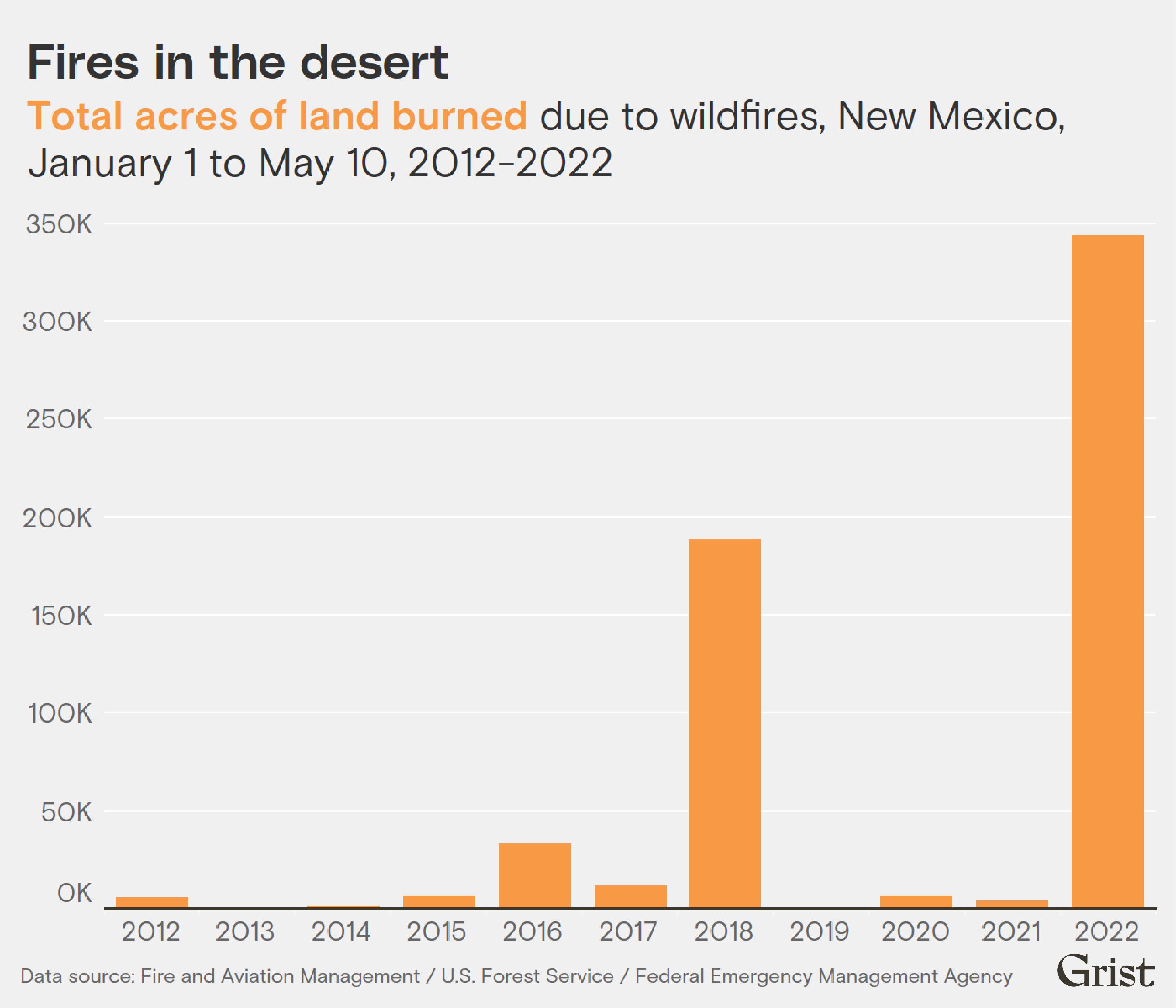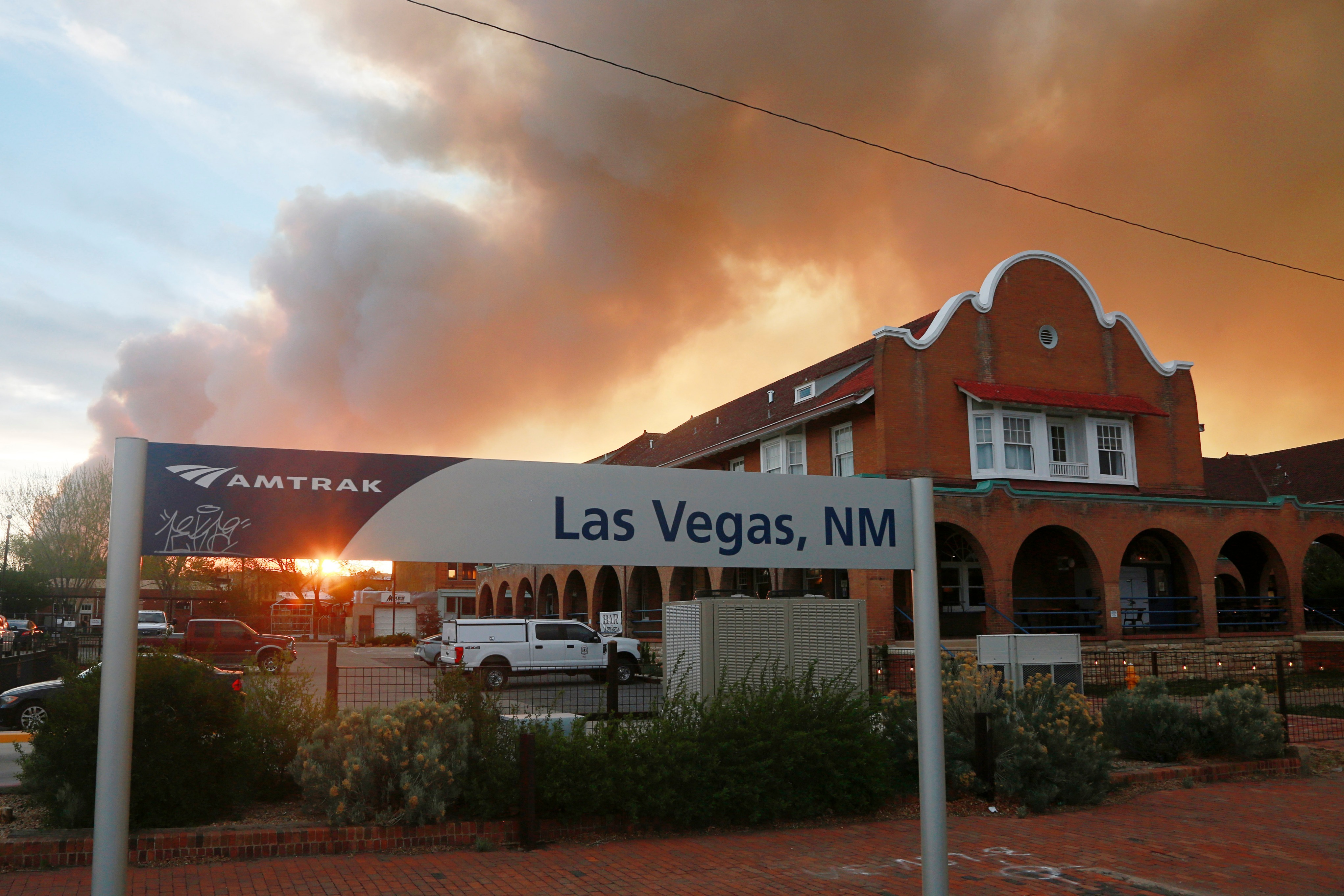The historic wildfires in New Mexico have triggered containment and evacuations at the local, state, and federal levels. The yet-to-be contained fires have incinerated over 280,000 acres of land since the beginning of April, while the Hermits Peak Fire, just east of Santa Fe, has burned more acreage than all wildfires in New Mexico last year. So far, at least 30,000 people have had to flee their homes.
New Mexico Governor Michelle Lujan Grisham called this year’s wildfire season “dangerously early,” but premature fire seasons catching local, state, or federal authorities off-guard has long been a concern for fire managers and fire researchers. To get ahead of that problem, some members of Congress have a solution. But that legislation hit a bureaucratic roadblock last autumn and has basically died.

Last year, during a Congressional hearing on the state of wildfire research, researchers and fire managers said that coordination among federal agencies to improve wildfire research would be tremendously helpful to prepare for future fires. Partnerships between research agencies, like NOAA, and forest management agencies like, the Department of the Interior, or DOI, do exist. The Joint Fire Science Program, for example, has been helpful in getting necessary information to stakeholders on the ground when wildfires spread. But what these programs often don’t do is connect all the relevant science research agencies together that contribute pieces to the wildfire fighting puzzle.
“[Research agencies] currently provide research and tools, such as fire weather predictions, satellite imagery, predictive fire analysis research and building codes,” testified Erik Litzenberg, Chair of the Wildland Fire Policy Committee of the International Association of Fire Chiefs. “A standardized warning system would help emergency managers and the public act as the fire develops.”
In the wake of the hearing, and the record-breaking wildfires that swept the West in 2020 and 2021, a group of Western House Democrats introduced a bill last October hoping to fill that research gap. The National Wildland Fire Risk Reduction Program Act aims to “to support the development of novel tools and technologies to improve understanding, monitoring, prediction, and mitigation of wildland fires, associated smoke, and their impacts.”
In practice, the bill codifies coordinated wildfire research between agencies like NASA, NOAA, The Department of Energy, Federal Emergency Management Agency, and the Environmental Protection Agency. The bill would also help facilitate collaboration from a host of other agencies including the United States Forest Service and the Department of Housing and Urban Development.
The bill would allocate over $2 billion to fund research into writing fire codes, supporting wildfire related classes for university students, improve smoke modeling, and study how wildfires might affect nationwide energy grids. The end result of the coordinated research could have improved how first responders prepare for, and manage, wildfires.
But the bill has stalled in Congress, caught in a parliamentary maze: To prevent slowing the bill’s passage, lawmakers opted to keep legislation’s jurisdiction limited to the House Committee on Space, Science, and Technology, effectively barring any direct conversations with firefighters and forest managers – services under the umbrella of different congressional committees. That carve out led Republicans to conclude that the bill wouldn’t be truly comprehensive, while representatives opined that their Democratic colleagues did not include them as directly in the bill drafting process. As such, Ranking Member of the House Science Committee, Oklahoma Representative Frank Lucas, indicated that the bill would have “no legislative future.”
But in New Mexico, less than half of the Hermits Peak Fire is fully contained, and firefighters haven’t yet managed to contain any of the Bear Trap Fire that’s burning near the San Mateo Mountains. Officials say that costs to contain the fires, so far, have hit $65 million. The region’s wildfire season can last through December.



